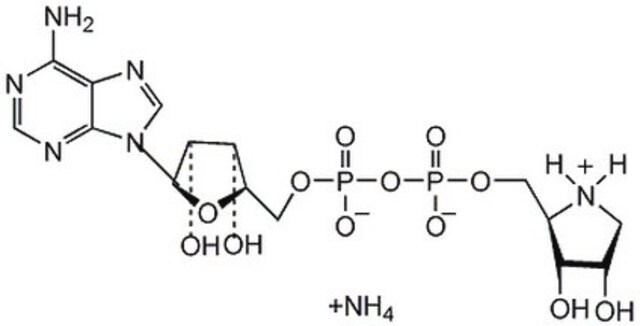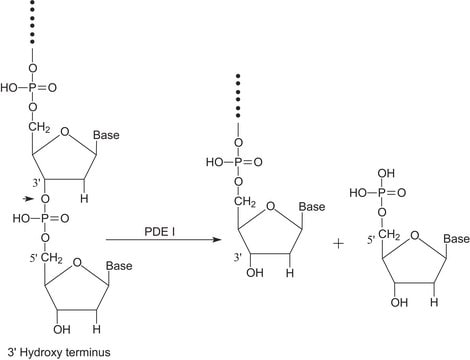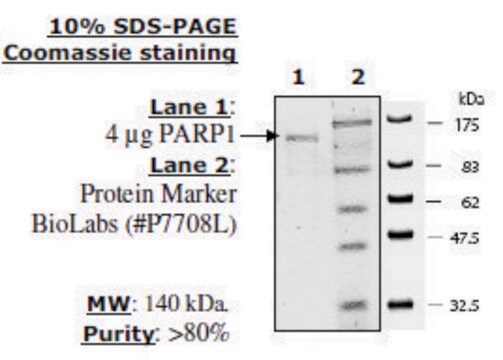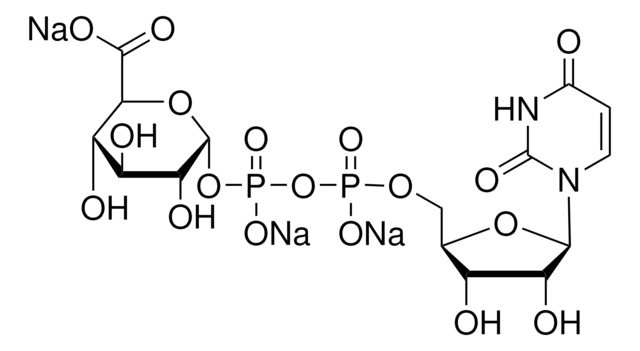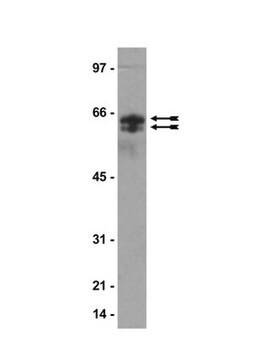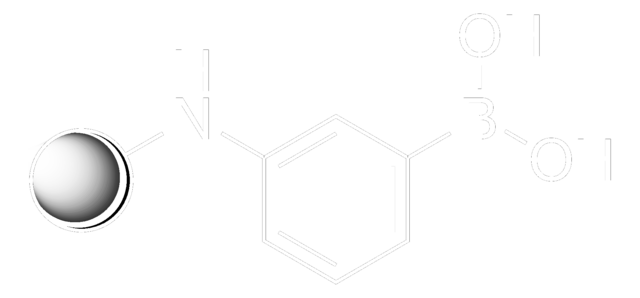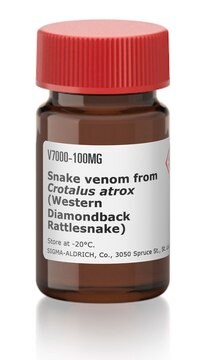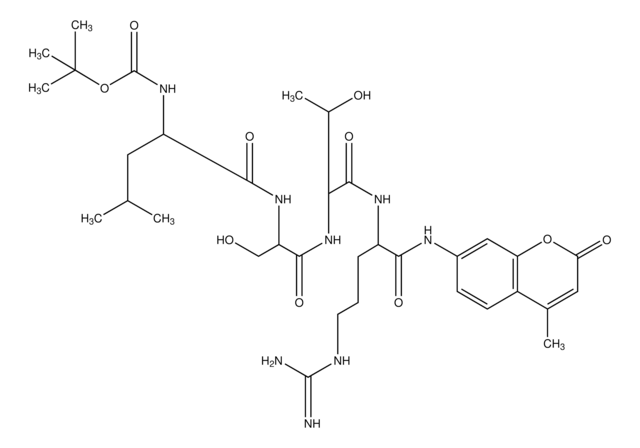SRP8023
PARG human
recombinant, expressed in Sf21 cells, His tagged, >95% (SDS-PAGE)
Synonyme(s) :
FNDC5 (cleaved), Poly(ADP-ribose) glycohydrolase
About This Item
Produits recommandés
Source biologique
human
Produit recombinant
expressed in Sf21 cells
Étiquette/Marqueur
His tagged
Essai
>95% (SDS-PAGE)
Forme
liquid
Poids mol.
~110 kDa by SDS-PAGE
Conditionnement
pkg of 2 μg
Concentration
≥0.2 mg/mL
Technique(s)
cell based assay: suitable
Couleur
clear
Solubilité
water: soluble
Numéro d'accès UniProt
Conditions d'expédition
dry ice
Température de stockage
−70°C
Informations sur le gène
human ... PARG(8505)
Description générale
Application
Actions biochimiques/physiologiques
Forme physique
Autres remarques
Mention d'avertissement
Danger
Mentions de danger
Conseils de prudence
Classification des risques
Repr. 1B
Code de la classe de stockage
6.1D - Non-combustible acute toxic Cat.3 / toxic hazardous materials or hazardous materials causing chronic effects
Classe de danger pour l'eau (WGK)
WGK 1
Point d'éclair (°F)
Not applicable
Point d'éclair (°C)
Not applicable
Faites votre choix parmi les versions les plus récentes :
Déjà en possession de ce produit ?
Retrouvez la documentation relative aux produits que vous avez récemment achetés dans la Bibliothèque de documents.
Notre équipe de scientifiques dispose d'une expérience dans tous les secteurs de la recherche, notamment en sciences de la vie, science des matériaux, synthèse chimique, chromatographie, analyse et dans de nombreux autres domaines..
Contacter notre Service technique